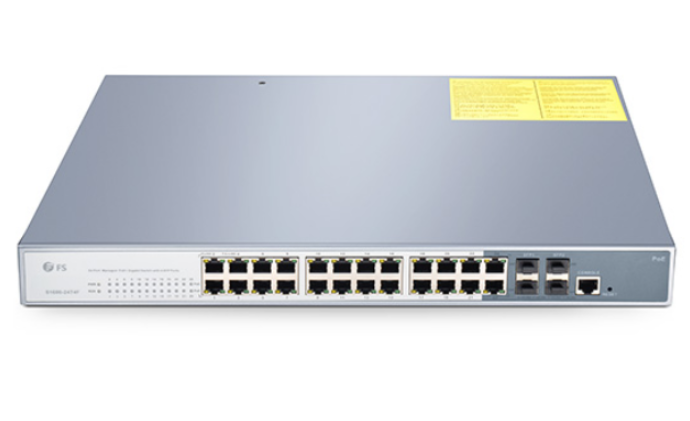Fiber optic network switch, or fiber switch, is a telecommunication device in a computer network which connects other devices together. More exactly, a fiber optic network switch receives a message from any device connected to it and then transmits the message only to the device for which the message was meant. Normally, multiple data cables are plugged into a fiber switch to enable communication between different networked devices. Look at the rest of this post to learn more about fiber switch.
Types of Fiber Optic Network Switch
Generally, a fiber optic network switch is referred to as a fiber optic Ethernet switch. Fiber optic network switches come in various different speeds with particular names as follows:
- Fast Ethernet switch with a speed of 10/100 Mbps
- Gigabit Ethernet switch with a speed of 10/100/100 Mbps
- Ten Gigabit Ethernet switch with a speed of 10/100/1000/10000 Mbps
Currently, the most commonly chosen speed on the market is still Gigabit Ethernet. Therefore, a Gigabit Ethernet switch is very popular among users. While, Ten Gigabit Ethernet has been growing rapidly these years, especially within data centers, which result in the top option for 10GbE switch.
Actually, in addition to these fixed configuration switches, you can find other fiber switches with higher transmission speed of 25, 40 or even 100 Gbps.
Typically, fiber optic network switches come in 5, 8, 12, 24, 32, 48 and 54-port configurations. Normally, these ports are a combination of fiber and copper connectivity. And there are a few SFP/SFP+ slots for fiber connectivity while more RJ-45 connectors on the front for copper connectivity in Gigabit Ethernet switch and Ten Gigabit Ethernet switch. For 25, 40 or 100G fiber switches, there are various ports such as SFP28, QSFP+, QSFP28, etc. The fiber connectivity allows for data transfer of up to 120km, whereas the copper connectivity only allows for distances of 100 meters.
Nowadays, a fiber optic Ethernet switch may implement power over Ethernet (PoE), which avoids the need for attached devices (such as a VoIP phone, IP camera, wireless access point, etc.) to have a separate power supply. Such fiber switch is called a PoE switch, which can deliver power to a device over the existing Ethernet cabling.
From all the features above, you may realize that there must be price difference between different fiber switches. In deed, if other configurations are the same, the much higher speed a fiber switch offers, the more expensive the price is! For example, a 24-port 10GbE switch is more expensive than a 24-port Gigabit Ethernet switch. Of course, such price principle is also applied to different port numbers and PoE VS non-PoE conditions. If you connect your devices to desktops which have no requirement on PoE to support power, then a non-PoE switch is a more cost-effective option.
Conclusion on Fiber Optic Network Switch
After the overview of fiber network switch definition and its features, you may have a general understanding of all the things involved with a fiber switch. If you want to choose a fiber switch which is right for you, you can take these things (switch types and speed, port numbers, price, etc.) into consideration.

